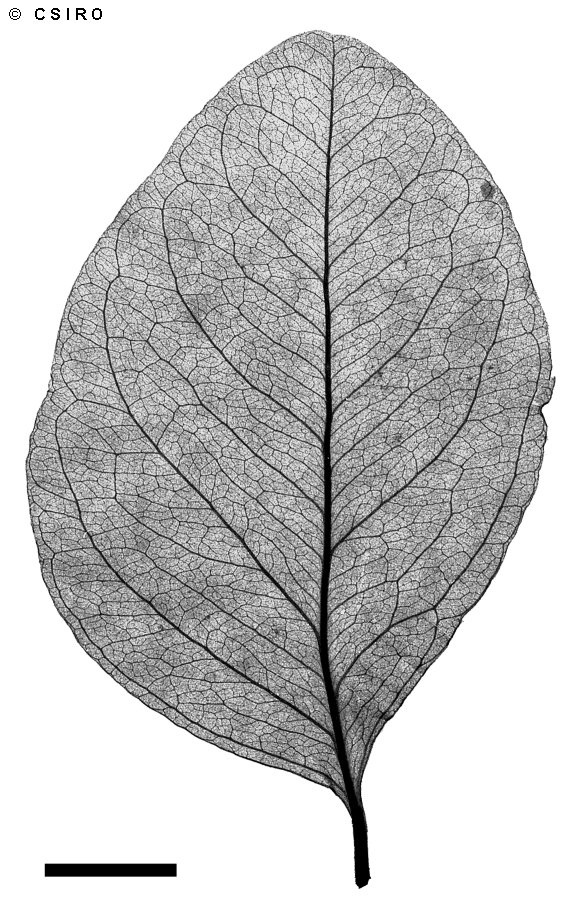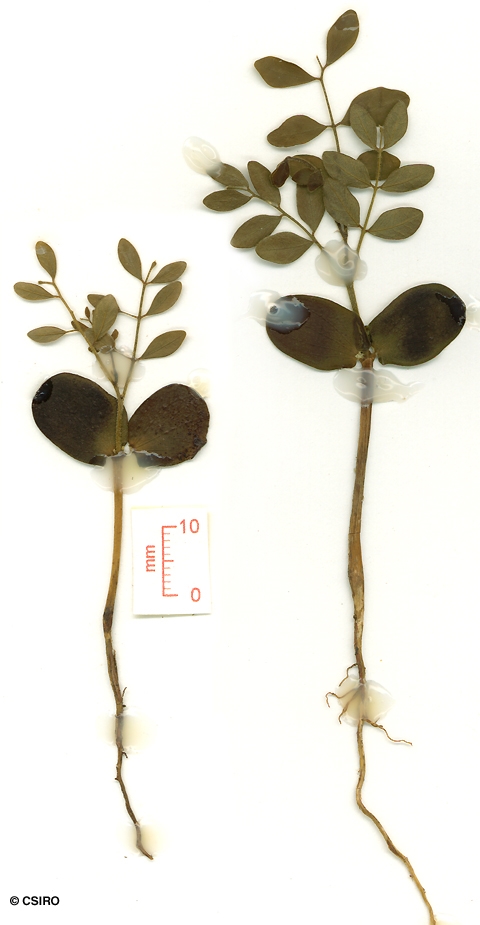Australian Tropical Rainforest Plants - Online edition
Erythrophleum chlorostachys (F.Muell.) Baill.





Baillon, H.E. (1870) Histoire des Plantes : 150.
Leguminous Ironwood; Red Ironwood; Black Bean; Cooktown Ironwood; Camel Poison; Ironwood, Cooktown; Ironwood; Ironwood, Leguminous; Ironwood, Red
Dead bark hard and horny to cut. Stem usually short. Wood extremely hard and heavy.
Leaflet blades about 3-5.5 x 2-4 cm, unequal-sided and very oblique at the base. Stipules small and inconspicuous (less than 1 mm long), caducous, visible only on young shoots. Young shoots densely clothed in short brown hairs. Leaflet stalks transversely wrinkled. Lateral veins forming a somewhat obscure series of loops inside the blade margin.
Pods flat, about 25-40 mm wide. Seeds flat, about 10 mm wide.
Cotyledons broadly elliptic, apex rounded, base auriculate, usually with five veins radiating from the base. First pair of leaves pinnate, usually with six leaflets, all parts sparsely pubescent. At the tenth leaf stage: leaves usually with 6-7 leaflets, each elliptic or ovate, apex obtuse, base unequal-sided; stem, terminal bud and petiole of compound leaf clothed in tortuous, pale hairs. Seed germination time 16 to 36 days.
Endemic to Australia, widespread in WA, NT, CYP and NEQ. Altitudinal range from sea level to 500 m. Normally grows in open forest but also found in monsoon forest and on rain forest margins.
This is the Ironwood or Cooktown Ironwood which produces a very useful, dense, durable and decorative timber.
The leaves (particularly the leaves of sucker shoots) have caused losses in cattle, horses, sheep, donkey, goats and camels. Everist (1974).
People working with the timber should be careful as it is suspected of causing dermatitis and splinters are reputed to cause complications.
Shade trees near houses where the rain water is collected in tanks should be viewed with suspicion. There have been reported cases of poisoning caused by the leaves being washed into the tank and or roof gutters.
The timber of this species was formerly used in the manufacture of lawn bowls. Swain (1928).
Bark material of this species was active against tumor cell cultures. Collins et al. (1990).
This tree is well known as a stock poison. Cribb (1981).
Wood specific gravity 1.22. Cause et al. (1989).





